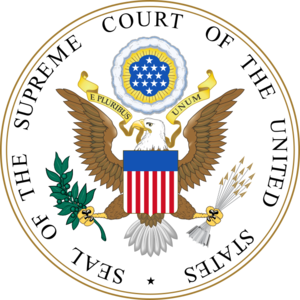Miller v. California (nonfiction)
Miller v. California, 413 U.S. 15 (1973), is a landmark decision by the United States Supreme Court where the court redefined its definition of obscenity from that of "utterly without socially redeeming value" to that which lacks "serious literary, artistic, political, or scientific value". It is now referred to as the three-prong standard or the Miller test.
Miller test
The Miller test has three parts:
- Whether "the average person, applying contemporary community standards", would find that the work, taken as a whole, appeals to the prurient interest,
- Whether the work depicts or describes, in a patently offensive way, sexual conduct or excretory functions specifically defined by applicable state law,
- Whether the work, taken as a whole, lacks serious literary, artistic, political, or scientific value.
The work is considered obscene only if all three conditions are satisfied.
The first two prongs of the Miller test are held to the standards of the community, and the last prong is held to what is reasonable to a person of the United States as a whole. The national reasonable person standard of the third prong acts as a check on the community standard of the first two prongs, allowing protection for works that in a certain community might be considered obscene but on a national level might have redeeming value.
For legal scholars, several issues are important. One is that the test allows for community standards rather than a national standard. What offends the average person in Manhattan, Kansas, may differ from what offends the average person in Manhattan, New York. The relevant community, however, is not defined.
Another important issue is that the Miller Test asks for an interpretation of what the "average" person finds offensive, rather than what the more sensitive persons in the community are offended by, as obscenity was defined by the previous test, the Hicklin test, stemming from the English precedent.
In practice, pornography showing genitalia and sexual acts is not ipso facto obscene according to the Miller test. For instance, in 2000, a jury in Provo, Utah, took only a few minutes to clear Larry Peterman, owner of a Movie Buffs video store, in Utah County, Utah. He had been charged with distributing obscene material for renting pornographic videos which were displayed in a screened-off area of the store clearly marked as adult-only. The Utah County region had often boasted of being one of the most socially conservative areas in the United States. However, researchers had shown that guests at the local Marriott Hotel were disproportionately large consumers of pay-per-view pornographic material, accessing far more material than the store was distributing.
In the News
Fiction cross-reference
Nonfiction cross-reference
External links
- Miller v. California @ Wikipedia
- Miller test @ Wikipedia
